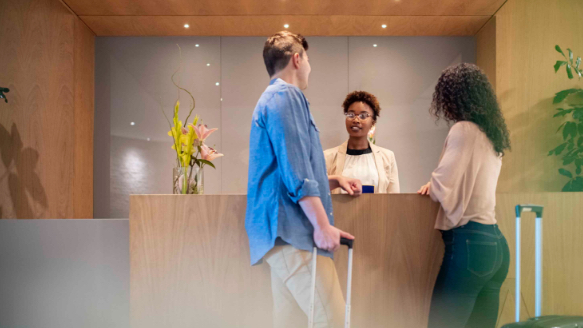
Kees Kwakernaak, General Manager at Fiserv Australia and New Zealand (ANZ)
Over the past few months we’ve witnessed a dramatic shift in how businesses operate in response to the COVID-19 pandemic. With the need to maintain social distance, businesses are adjusting their operating models and people are looking for new ways to pay and get paid. While the easing of lock down measures and consumers increasingly getting out and about have driven a recovery in retail transactions in recent months, we are witnessing some notable trends that are here to stay.
It is essential for businesses to understand how COVID-19 has impacted the way Australians shop, make purchase decisions and pay, especially in terms of digital commerce and cashless payment adoption.
Welcome to the ‘Normal Next’: Cashless Payments
According to Reserve Bank data, ATM withdrawals in April were down by 53% compared to the same time last year. Despite the gradual rebound in recent months, total withdrawals in July were still down 23% year-on-year. During the same timeframe, we have seen strong resiliency in card transactions. While there was a dip in April, the number of aggregated card transactions swiftly bounced back to pre-COVID volumes by July.
If we take a closer look at the card transaction data, what’s more noteworthy is the uptick in the ‘device-not-present’ transactions, i.e. card transactions performed over digital channels. Debit card transactions over digital channels have been on a steady upward trend over the last 12 months, recording a 30% year-on-year growth in July.
Evolving the Point of Sale
In a country with one of the highest contactless payment adoption rates in the world, the pandemic has given new importance to contactless payments for retailers at the point of sale. ‘Tap and Go’ contactless payment option has become even more popular, as the payment industry implemented an increase in contactless payments transaction limit from $100 to $200 to help reduce physical contact with the payment terminal.
Beyond the popular ‘tap and go’ payments, consumers are becoming more familiar with alternatives to cards and cash that limit physical contact. According to the Digital Payments Report by Roy Morgan, the use of contactless mobile payment services increased to a total of 10.8% in May, up from 7.1% same time last year.
As contactless payments evolve into touchless payments, other non-card payment methods will start to be seen at the point of sale. These include QR codes, self-checkout via sensors or payment via voice command over a phone, which have already taken off in other countries.
Accelerating Digital Experiences to Complement Physical Locations
The consumer landscape is adapting towards a more agile and accessible purchase experience while the lines between digital and physical commerce are being increasingly blurred. During this period, traditional bricks and mortar retailers have complemented their physical retail locations with online stores. According to a market research report conducted by IBIS World, online shopping in Australia has an anticipated revenue growth of 11.1% this year due to COVID-19.
In addition, many industries and verticals found new ways of doing business and new revenue streams by introducing digital commerce and payment options. The most prominent example is restaurants. Many have switched to delivery or pick-up only service during this period in which orders and payments are done online, via marketplaces like Menulog and Uber Eats or over a payment link via virtual terminals.
Going forward, established brands may take additional permanent steps toward more efficient operations, possibly leaving large, high-rent spaces for smaller ones. The future of a business will in many cases depend upon its flexibility and ability to adapt to an omnichannel retail environment offers customers a seamless experience regardless if they shop online or in-store.
Changing at a Local Level
Another overriding spend trend that has emerged not only in Australia but around the world is the rise of suburban shopping. Local stores based in residential areas are busier than ever, a reflection upon people staying local and shopping in their local shopping centres.
Previously, small convenience stores, takeaway shops and bakeries, often run by families, may have been deterred from accepting cashless payment options due to the cost of accepting these payments. However, with the introduction of merchant choice routing for card payments retailers’ cost of acceptance can be significantly lowered, making cashless payments a more viable option even for mom and pop shops.
Conclusion
With challenges also come opportunities. It is encouraging to see how businesses have adapted and technology has enabled safer, faster and more convenient means of payments and shopping experience. As we emerge from the pandemic, being ready to sell and serve the newly evolved consumers will be critical, with cashless digital payment options playing an essential role.





